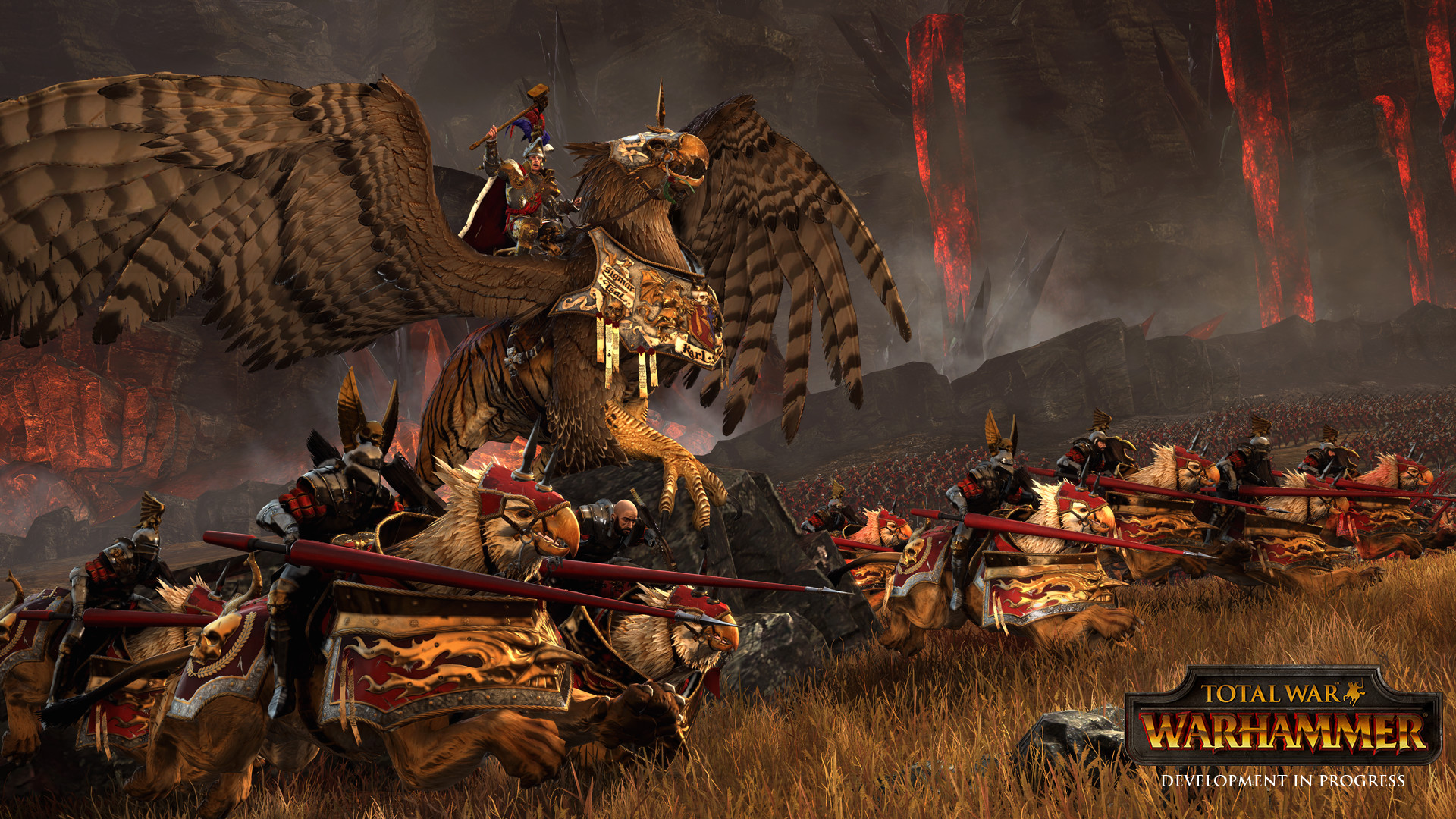Created by Games Workshop in 1983 as a table top strategy game (Warhammer Fantasy Battles) using fantasy miniatures, the Warhammer franchise has grown tremendously across different media. Its dark and gritty setting, populated with different races and creatures struggling against one another, has been a major source of inspiration, particularly with video games looking to bring it to life. That’s where The Creative Assembly comes in.
Famous for the Total War series, The Creative Assembly made a name for itself developing deep, historically-themed, strategy games where players command huge armies. One of the most popular games in the franchise, Total War: Rome II, let players build the world’s first superpower through military, economic and political means—featuring prominent historical figures such as Marc Antony, Lepidus and Caesar himself in its add-ons. That experience is being combined with the Warhammer franchise to create one massively epic game: Total War: Warhammer.
Al Bickham, studio comms manager at Creative Assembly, talks to [a]listdaily about bringing two brands together to create the definitive Warhammer fantasy strategy game releasing on May 24.
What made Creative Assembly realize that the Total War and Warhammer franchises would work together?
The two properties map incredibly well. They’re both essentially games in which everything leads to rank-and-file armies smashing each other to bits, and we’re not the only people to have spotted that natural fit. One of the most common responses to the initial announcement that we were making a Total War title based in the Warhammer universe was “How hasn’t this happened before?!”
Total War usually works with real historic battles and factions. Was it quite a shift to work with fantasy?
In some regards it wasn’t such a shift—all the history books for the Warhammer world are right in front of us, and the lead writer on the game, Andy Hall, is ex-Games Workshop, so he knows the lore intimately. It was a case of applying the process of creating a Total War title to a deeply-established high-fantasy background as opposed to a historical one.
In other regards, it’s like nothing we’ve ever attempted! The rich Warhammer universe presented us with some interesting new design challenges. How do we bring magic, monsters, heroes and flying creatures to a game series that has always been rooted in the reality of historical backdrops? Our motion-capture facility hasn’t seen as much use as it normally does, as we’ve had to hand-key animations for the many weird and wonderful creatures that Warhammer comprises. It’s been a huge learning experience and a crazy-fun challenge.

How have you been working to ensure the game stays true to both the Total War and Warhammer brands?
Our design principles as a studio are quality, authenticity and fun, and that’s what we’re aiming for with Total War: Warhammer. We’re enormously enthusiastic about representing the Warhammer IP as accurately and arrestingly as we can, and that’s not a box-ticking exercise; it’s what the potential players of our game really want, so the more reverently, accurately and strikingly we treat the IP, the better it is for everyone.
We’re working this detail into the Total War framework of a grand strategic campaign game of statecraft and expansion, interspersed with spectacular real-time battles comprising thousands of troops. In Total War terms, there’s a greater variety of gameplay features and mechanics between different playable races than we’ve ever attempted before, so each race looks, plays and feels very different. In short, our aim is to make the definitive Warhammer strategy game, and I think we’ve achieved that.
Is it difficult to promote a game that combines two such well-known franchises?
In many ways, it’s been a dream project for our PR, community and marketing teams. The content of the game is so richly compelling, and the deep level of Warhammer knowledge out there means that people really get it. Moreover, there’s a great thirst for user-generated content—Let’s Play videos, livestreams and so forth—so when people get the game, we’re fully expecting we’ll see the community’s own takes on the game and its content.
How have you been working to appeal toward gamers who aren’t familiar with Total War or Warhammer?
The setting, characters and content do a great job of transcending boundaries. It’s a really compelling high-fantasy setting that, while it shares some core tropes with other fantasy universes, has a style, personality, narrative and history all its own.
Warhammer has a large number of factions. How do you choose which ones will appear in Total War: Warhammer?
Initially at least, on a geographical basis. This is the first of three titles (we have plans for two follow-up expansions to come over the next couple of years), and deals with The Old World—the central Europe, if you like—of the Warhammer world map. Initially, we’re dealing with the races that appear in that landmass. Over time, through expansions, DLC and free content packs, we’ll be expanding the world mass and the faction rosters to encompass all the other major races covered by the 8th Edition of Warhammer Fantasy Battles.
What do you think makes Warhammer such an enduring franchise?
It’s enormously characterful, insanely detailed, wonderfully imaginative, and over its 30-year lifespan, it has pretty much defined tabletop wargaming as a popular hobby.

